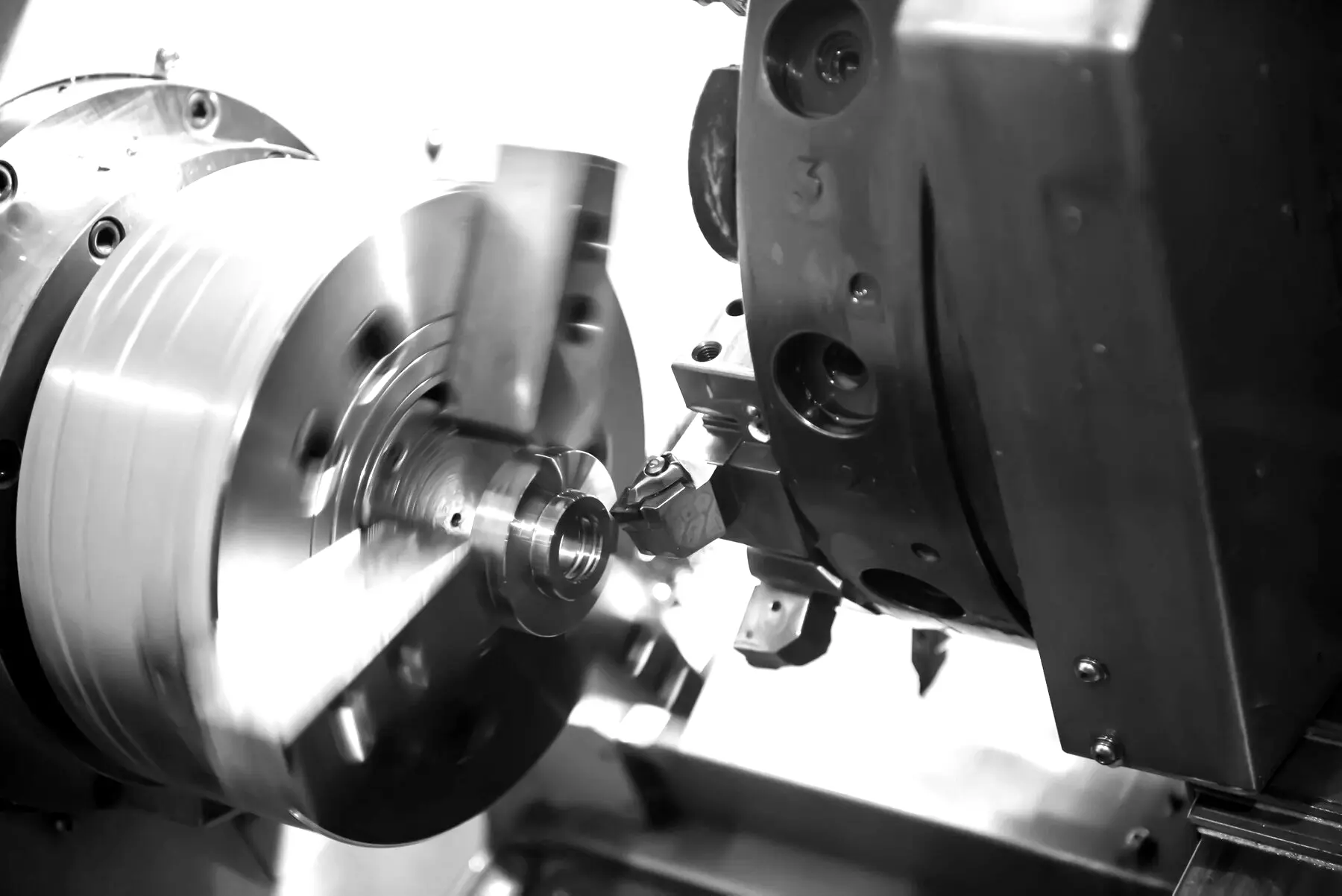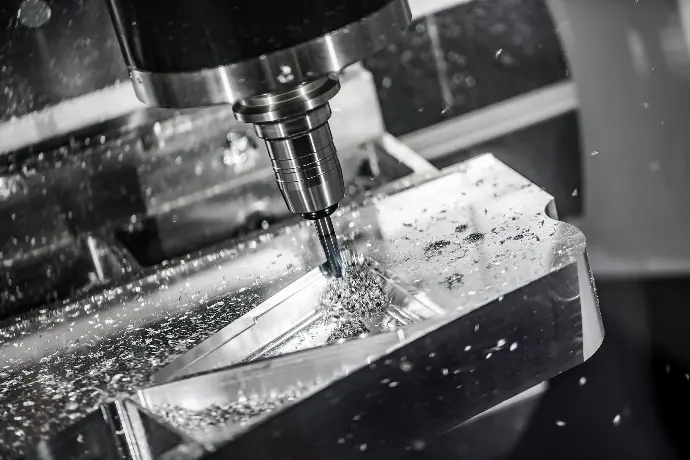MACHINING
SKILLS IN MACHINE DEDICATED TO INDUSTRIAL HIGH REQUIREMENTS
At CNC LEBRUN we are proud of our expertise in CNC machining of precision parts. Whether you need small or medium production runs, our highly qualified team is ready to meet your most demanding requirements.
What is CNC machining ?
CNC machining, or Computer Numerical Control, is an automated manufacturing method for producing high-precision parts by material removal. Thanks to sophisticated computer programs, CNC machines can cut, drill and shape materials with unrivalled precision and repeatability.
Turning
Turning is a machining process in which a rotating workpiece is cut with a fixed cutting tool to create cylindrical or conical surfaces.

This method is often used to produce parts such as shafts, axles or rotating parts.
Complex revolution shapes can be produced more cost-effectively with a CNC lathe than with a 3-axis or 5-axis CNC milling machine. With a CNC lathe, the chuck holds the rotating part, while the cutting tools move axially and radially.
If non-axis-of-revolution surfaces are required on a mainly turned part, as a general rule, the geometry of revolution is first created using a lathe, then the part is moved to a milling machine to machine the other surfaces. Lathes with milling tools can perform certain milling operations such as drilling, slotting and tapping within the lathe itself.
Turning capacities
Diamètre maximale : 320 mm
Longueur maximale : 1260 mm
Milling
Milling is a machining process in which a rotating cutter removes material from the workpiece to create precise shapes and surfaces.

This method is ideal for manufacturing parts with complex geometries, such as gears, molds or machine parts.
Parts are manufactured by holding the material or workpiece on the machine table, while a rapidly rotating spindle holding the cutting tool removes material. Horizontal and vertical movements of the table are used to move the part, enabling it to be cut to different shapes and depths.
In machines with an additional control axis, such as the rotary axis in 5-axis machines, tooling can access multiple faces and hard-to-reach areas to create complex designs with fewer external part manipulations (e.g. turning, machine changeover).
Milling capacities
4 axes: 3000*800*720 m
5 axes: 763*508*508
To understand the difference between turning and milling, imagine a turner shaping a cylindrical part from a bar of raw material, while a miller sculpts a complex shape from a prismatic raw material.
Our environmental approach
Through these different methods, we are committed to maintaining 100% French production.
Specific waste management measures are in place to promote the circular market.
Consumables
Consumables stored in dedicated containers
Around 50,000 liters are sent out each year.
energy approach
Reuse of heat emitted by compressors to heat our buildings
Raw materials
Recovery of material scraps and machining chips.
Around 20 tonnes reprocessed per year.